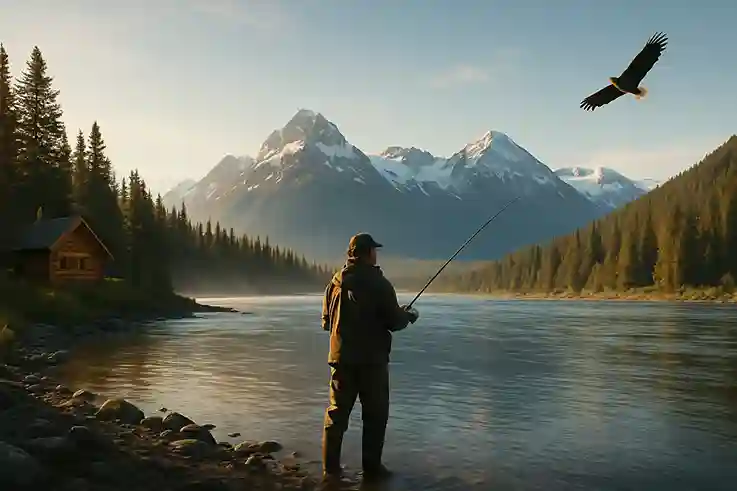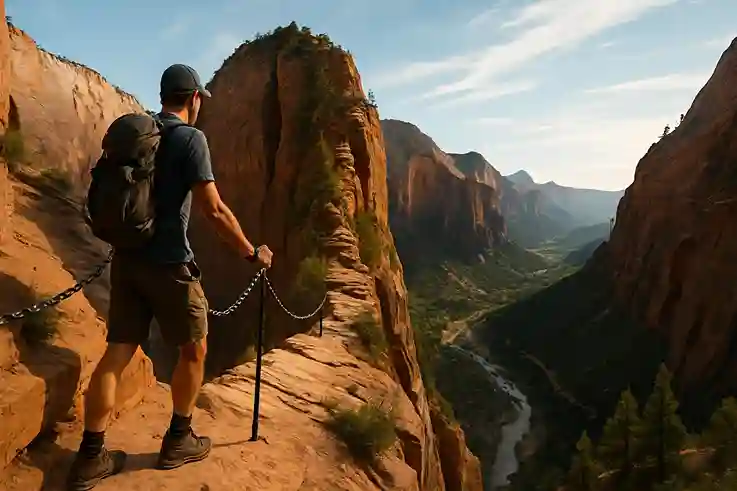Unforgettable Alaska Fishing Trips
Alaska fishing trips begin with something simple—a cast into silence, a ripple on a cold, glacial river. Mine started just after sunrise on the Kenai, where the fog still clung to the trees and the only sound was the quiet hum of the reel. I stood knee-deep in icy water, my fingers stiff, heart racing. I wasn’t sure if it was from the cold or the anticipation. Probably both.
In that moment, it hit me—this wasn’t just another trip. It was a step into something untamed. Alaska doesn’t wait for you to adjust. It swallows you whole—in the best way possible. With towering spruce forests, rushing rivers that flash with silver salmon, and skies that stretch for miles without interruption, it’s a place that reminds you what wild really feels like.
Alaska fishing trips aren’t just about catching fish. They’re about disconnecting, slowing down, and tuning in to something ancient and vast. And yes, the fish are big—but so is the peace you find between casts.
In this blog, I’ll walk you through some of the best fishing spots in Alaska, essential gear tips, seasonal advice, and a few personal stories that still stick with me. Whether you’re a seasoned angler or just dreaming of your first trip north, this guide will give you everything you need to plan—and savor—an unforgettable Alaskan fishing experience.
Why Alaska Fishing Trips Are in a League of Their Own
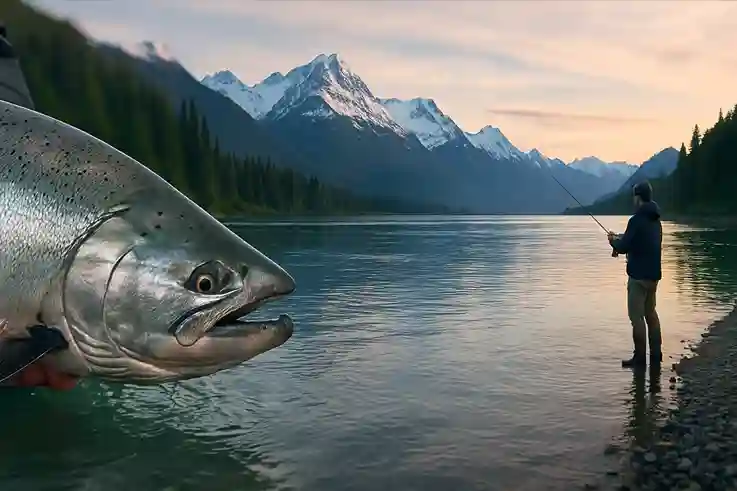
It’s hard to grasp just how vast Alaska is until you’re standing in the middle of it—no cell service, no noise, just you and a river older than memory. Alaska fishing trips take you far from the comforts of civilization and drop you into a landscape where nature is still fully in charge.
Out here, the scale is staggering. Rivers stretch for miles without a single dock or boat in sight. Snowcapped peaks loom in the distance, and spruce forests line the banks like walls of green. It’s not unusual to go hours without seeing another soul—and that’s part of the magic.
The fish are just as impressive as the land. King salmon that fight like freight trains. Rainbow trout with colors that flash in the sun. Halibut so heavy they require a second set of hands. These aren’t fish you catch and forget. They demand your focus, strength, and patience—and reward you with stories you’ll tell for years.
But beyond the size and thrill, there’s something else that lingers: the silence. The kind you can feel. The kind that clears your head. There’s no hum of traffic, no background buzz—just wind, water, and the occasional splash as your line hits the surface.
Here’s the thing: Alaska rewards those who plan ahead. You won’t find convenience stores around the corner, and you can’t rely on a last-minute gear run. Pack smart, know the terrain, and respect the isolation. Because out here, being prepared isn’t just a good idea—it’s part of the experience.
Whether you’re chasing that once-in-a-lifetime trophy fish or just looking to lose yourself in the wild for a while, Alaska delivers more than a trip. It delivers perspective.
Choosing the Right Fishing Style for Your Alaska Trip
I had no idea fly fishing would require such patience, but by day two, it felt like a kind of meditation. Standing still, watching the water, waiting for that perfect drift—it forced me to slow down in the best way. And that’s just one way to fish in Alaska. There’s no one-size-fits-all here. Your ideal experience depends on your comfort level, interests, and how deep into the wilderness you’re willing to go.
Let’s break down the main fishing styles you’ll find in Alaska—each one offering a different kind of thrill.
Fly Fishing: Rivers and Reflection
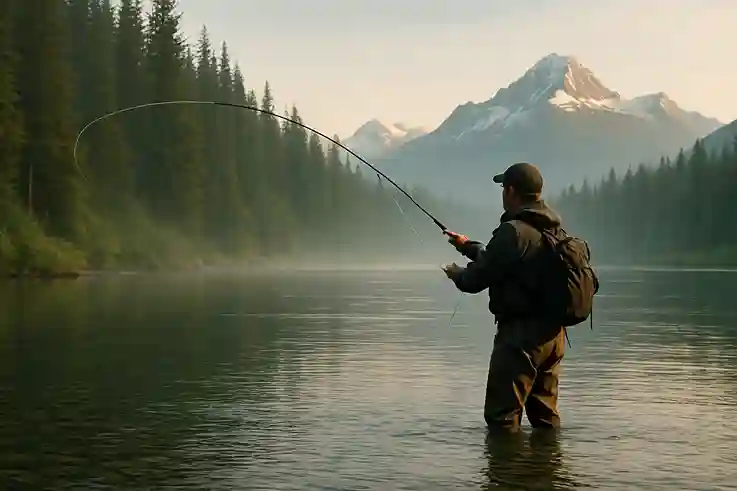
Best for: Solo travelers, nature lovers, anglers seeking challenge
Fly fishing in Alaska is all about finesse and focus. You’ll find yourself wading into crystal-clear rivers, casting for rainbow trout, grayling, and all five species of Pacific salmon. It’s quiet, intimate, and intensely satisfying—especially when you finally land that perfect drift and the line tightens.
This is ideal if you want to be close to the water, moving with it, not just waiting. It’s also a great option if you prefer a low-impact, minimal-gear experience with lots of natural immersion.
Deep Sea Fishing: The Ocean Giants
Best for: Families, first-timers, those chasing big catches
If you want power and size, deep sea fishing out of ports like Homer or Seward is your go-to. You’ll board a charter boat, head into the Gulf of Alaska, and drop lines for halibut, rockfish, or Pacific cod. These trips are full of action and camaraderie, and the guides often take care of everything—from gear to fish cleaning.
It’s perfect for those who want the thrill of a strong pull and don’t mind a little sea spray. Bonus: the views of glaciers and coastal wildlife are incredible.
Ice Fishing: Winter Solitude on Frozen Lakes
Best for: Adventurers, winter travelers, bucket-list chasers
Want something truly different? Try ice fishing in the interior regions like Fairbanks or remote lodges near Lake Louise. You’ll drill through thick ice, set up shelter, and fish for lake trout or burbot in near silence.
It’s cold, yes—but also incredibly peaceful. Be prepared with layered gear and a taste for unique adventure. This style is best for those visiting Alaska in the off-season who don’t mind the cold and want a completely different fishing experience.
Guided Float Trips and Heli-Fishing: Remote Wonders
Best for: Photographers, experienced anglers, off-the-grid travelers
For those who want complete wilderness immersion, nothing beats a guided float trip or heli-fishing. Imagine flying into untouched backcountry, landing next to a river no road touches, and fishing in silence all day—sometimes with bears in the distance.
These trips are usually multi-day, involve camping or lodge stays, and are led by experienced guides who know the terrain, species, and safety protocols. You’ll pay more—but the payoff is a fishing experience few others will ever have.
No matter which style you choose, Alaska will meet you where you are—whether you’re holding a fly rod for the first time or chasing your personal best with every cast. The only wrong choice? Not going at all.
Top Places I Explored on My Alaska Fishing Trip
Alaska isn’t short on great fishing spots—but each one offers a different kind of experience. I wanted variety: a mix of river and sea, easy access and raw remoteness. What I found were places that didn’t just test my skills—they completely reset my idea of what a fishing trip could be.
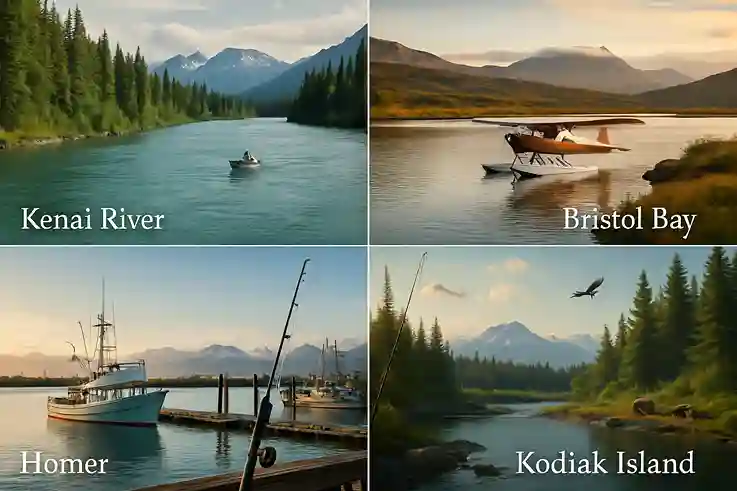
Kenai River: Where the King Salmon Run Strong
This was my first stop—and it’s easy to see why the Kenai River is considered a legendary starting point for many Alaska fishing trips. Flowing like a turquoise ribbon through the lush Kenai Peninsula, it’s one of the most accessible rivers in the state, just a scenic three-hour drive from Anchorage. But despite how easy it is to get there, the experience feels anything but ordinary.
The river is famous for record-breaking king salmon, and the moment I felt the weight of one on my line, time slowed. It wasn’t just a fish—it was a battle of will and strength, with the wild current backing up its every move. That one catch taught me exactly why people return to this river year after year, chasing not just the fish—but the feeling.
Bristol Bay: Remote, Pristine, and Fly-In Only
If you want to feel like you’re the only human for miles, Bristol Bay is where you go. I boarded a floatplane with my gear in tow, soaring over endless miles of tundra and winding rivers before landing on a glassy stretch of water near a remote lodge. For the next three days, I was surrounded by nothing but sky, silence, and the promise of some of the best salmon and trout fishing on Earth. Every cast felt sacred. The river was so clear I could see the fish moving before my line even hit the water. Bristol Bay is wild in every sense—no roads, no crowds, no distractions. Just you, the fish, and a landscape untouched by time.
Homer: Halibut Capital of the World
Homer is the kind of coastal town that feels like a fishing village frozen in time—rusted harbors, weathered docks, and seafood shacks that smell like stories. But don’t let the sleepy charm fool you. Once you step onto a modern charter boat and head into the deep, rolling waters of Kachemak Bay, everything changes. Out there, beneath the surface, swim monster halibut—some bigger than the person reeling them in. This is where the sea doesn’t just test your gear—it tests your grip, your patience, and your grit. My arms were sore for days after landing my first halibut, but the adrenaline of that moment still hits when I close my eyes.
Kodiak Island: Wild, Remote, and Bear Country
Reaching Kodiak wasn’t simple—a flight from Anchorage, a long ferry ride, and a good dose of patience with the unpredictable weather. But every mile felt like it peeled back another layer of civilization. By the time I stepped onto the island, I felt like I had arrived at the edge of the map. The streams here run cold and clear through mossy forest and rugged hills, and the only company you’ll likely have are bears fishing just upstream and bald eagles gliding silently overhead. I spent hours casting into untouched water, completely immersed in the rhythm of the wild. It’s not just remote—it’s raw, and it reminded me how small we are in places this vast and unspoiled.
Best Time for Alaska Fishing Trips: Seasons & Species
| Season | Months | What to Catch | Why Go |
|---|---|---|---|
| Spring | May – June | Halibut (starts in May), early King Salmon | Fewer crowds, early season calm, great for coastal fishing |
| Summer | June – August | Sockeye, King, Pink, Chum Salmon | Peak season for salmon runs, long daylight hours, active rivers |
| Fall | September – October | Coho (Silver) Salmon, Trophy Rainbow Trout | Less crowded, crisp air, strong trout and coho fishing |
Things I Got Wrong on My First Alaska Fishing Trip
I came into my first Alaska fishing trip thinking I knew a thing or two about angling. Turns out, the wild teaches fast—and humbles faster.
Overconfident Casting
Back home, I could cast with ease and precision—muscle memory from years of calm lakes and quiet mornings. But Alaska’s wide, fast-moving rivers were a different world entirely. My line tangled more times than I’d like to admit. The fish? Completely unbothered. It took me a full day to realize I wasn’t casting with the water—I was working against it. Alaska doesn’t adjust to you. You learn to adjust to Alaska.
Underestimating the Cold
I packed warm gear—fleece hoodies, extra socks—but not Alaska warm. Morning winds off the river stung like ice, and by mid-afternoon my hands were too numb to tie a clean knot. I hadn’t brought waterproof gloves or wool layers, and I paid for it in shivers. The lesson? When packing for Alaska, assume you’ll be colder than you think—and then add another layer.
Not Asking Enough Questions
My guide had decades of experience, but I barely tapped into it at first. I nodded, smiled, and acted like I had things under control. Meanwhile, I missed clues—where the trout were sitting, when to switch flies, how to read the current better. By day three, I finally started listening. That’s when things turned around.
Take it from me: Let your ego go. Listen to your guide, ask questions like a beginner, and don’t fight the fish too early. Alaska rewards patience, not pride.
The Moment That Made It All Worth It
Just before we packed up on the final day of my Alaska fishing trip, the rain had started to fall in steady rhythm. We were wet, tired, and ready to call it. Then my line went tight.
At first, I thought it was snagged—until it pulled back. What followed was a ten-minute tug-of-war that made every earlier mistake worth it. When I finally brought that 25-pound king salmon to shore, I didn’t reach for my camera. I just held it. Felt its weight. Its power. Its wild, thrumming energy.
That moment didn’t shout—it just stayed.
And it reminded me of something I often forget in the rush of travel: adventure doesn’t have to be flashy to be unforgettable. Sometimes, it’s quiet, cold, and soaked to the bone. But real. And yours forever.
FAQ About Alaska Fishing Trips
1. What’s the best time of year to catch king salmon in Alaska?
The best time to catch king salmon in Alaska is typically from mid-June to early July, depending on the river system. Check local run forecasts, especially for the Kenai and Nushagak Rivers.
2. Do I need a fishing license for a guided Alaska fishing trip?
Yes, all anglers over 16 need a fishing license in Alaska, even on guided trips. You’ll also need a king salmon stamp if you plan to target them.
3. What should I wear for a summer fishing trip in Alaska?
Pack layered waterproof clothing, wool socks, and wading boots. Even in summer, Alaska’s weather is unpredictable and rivers are cold.
4. Are Alaska fishing lodges worth the price for first-time visitors?
Yes—fishing lodges in Alaska offer expert guidance, meals, and access to remote areas you couldn’t easily reach on your own. Ideal for first-timers who want a stress-free experience.
5. Can families with kids enjoy an Alaska fishing trip?
Absolutely. Many operators offer family-friendly fishing trips in Alaska, with shorter days, calm waters, and safety gear included. The Kenai Peninsula is especially great for beginners.
6. How physically demanding are Alaska fishing trips?
It depends. Remote trips may require hiking or floatplane travel, while others are boat-based and easier. Discuss your comfort level with the outfitter before booking.
7. Should I bring my own fishing gear to Alaska or rent it?
If you’re not experienced, it’s best to use gear provided by Alaska fishing guides. It’s suited to local conditions, and you’ll save on packing and transport.
Conclusion: What Alaska Gave Me
It wasn’t the fish I remember most. Not the 25-pound king or the one that snapped my line. It was the quiet. The sky that stretched forever. The way time slowed when the only sound was water moving past my boots.
Alaska fishing trips gave me something I didn’t know I needed—space to disconnect and remember what it feels like to be fully present.
If you’ve ever dreamed of casting into something bigger than yourself—Alaska’s waiting. Bring your patience, your curiosity, and maybe a little humility. The fish are just part of the story.
Have questions about gear, timing, or where to go?
Drop them in the comments—I’d love to help you cast your first line into Alaska’s wild waters.

Michael Reyes is a versatile blogger with a primary focus on farming and sustainable living. Growing up close to nature, he developed a deep interest in agriculture and enjoys sharing practical tips on backyard farming, modern cultivation techniques, and eco-friendly practices. While farming remains his specialty, Michael also writes on a wide range of topics, from lifestyle and travel to everyday inspiration, making his work relatable to a broad audience.
Outside of writing, Michael enjoys spending time outdoors, experimenting with new farming methods, and exploring different cultures through food and travel. His approachable voice and well-researched insights make his blogs both informative and engaging.
